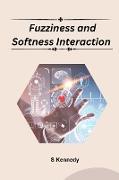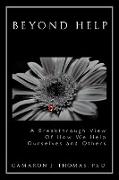Fuzziness And Softness Interaction
BücherAngebote / Angebote:
Fuzziness and softness are two concepts that are frequently used in various fields, such as computer science, mathematics, engineering, and psychology. Fuzziness is the degree of vagueness or uncertainty in a concept or idea, whereas softness is the degree of flexibility or malleability in an object or system. The study of fuzziness and softness interaction is an area of research that explores the relationship between these two concepts. The interaction between fuzziness and softness has been explored in various fields, including fuzzy logic, decision-making, optimization, and artificial intelligence. In fuzzy logic, the interaction between fuzziness and softness is crucial, as it allows for the development of systems that can handle imprecise and uncertain information. For example, in a fuzzy logic-based control system, the degree of softness of the control inputs can be adjusted to achieve a desired level of fuzziness in the output. In decision-making, the interaction between fuzziness and softness is also important, as it allows for the consideration of multiple criteria and preferences. For example, in multi-criteria decision-making, the degree of softness of the criteria can be adjusted to achieve a desired level of fuzziness in the final decision. This can be useful in situations where the decision-making process involves subjective or uncertain information. In optimization, the interaction between fuzziness and softness can be used to develop robust and flexible solutions that can adapt to changing environments. For example, in a fuzzy optimization problem, the degree of softness of the objective function can be adjusted to achieve a desired level of fuzziness in the optimal solution. This can be useful in situations where the optimization problem involves uncertain or changing parameters. In artificial intelligence, the interaction between fuzziness and softness can be used to develop intelligent systems that can learn from imprecise and uncertain data. For example, in a fuzzy neural network, the degree of softness of the activation function can be adjusted to achieve a desired level of fuzziness in the output. This can be useful in situations where the input data is noisy or incomplete. Overall, the study of fuzziness and softness interaction is an important area of research that has applications in various fields. By understanding the relationship between these two concepts, researchers can develop new techniques and algorithms that can handle imprecise and uncertain information, leading to more robust and flexible solution
Folgt in ca. 15 Arbeitstagen


